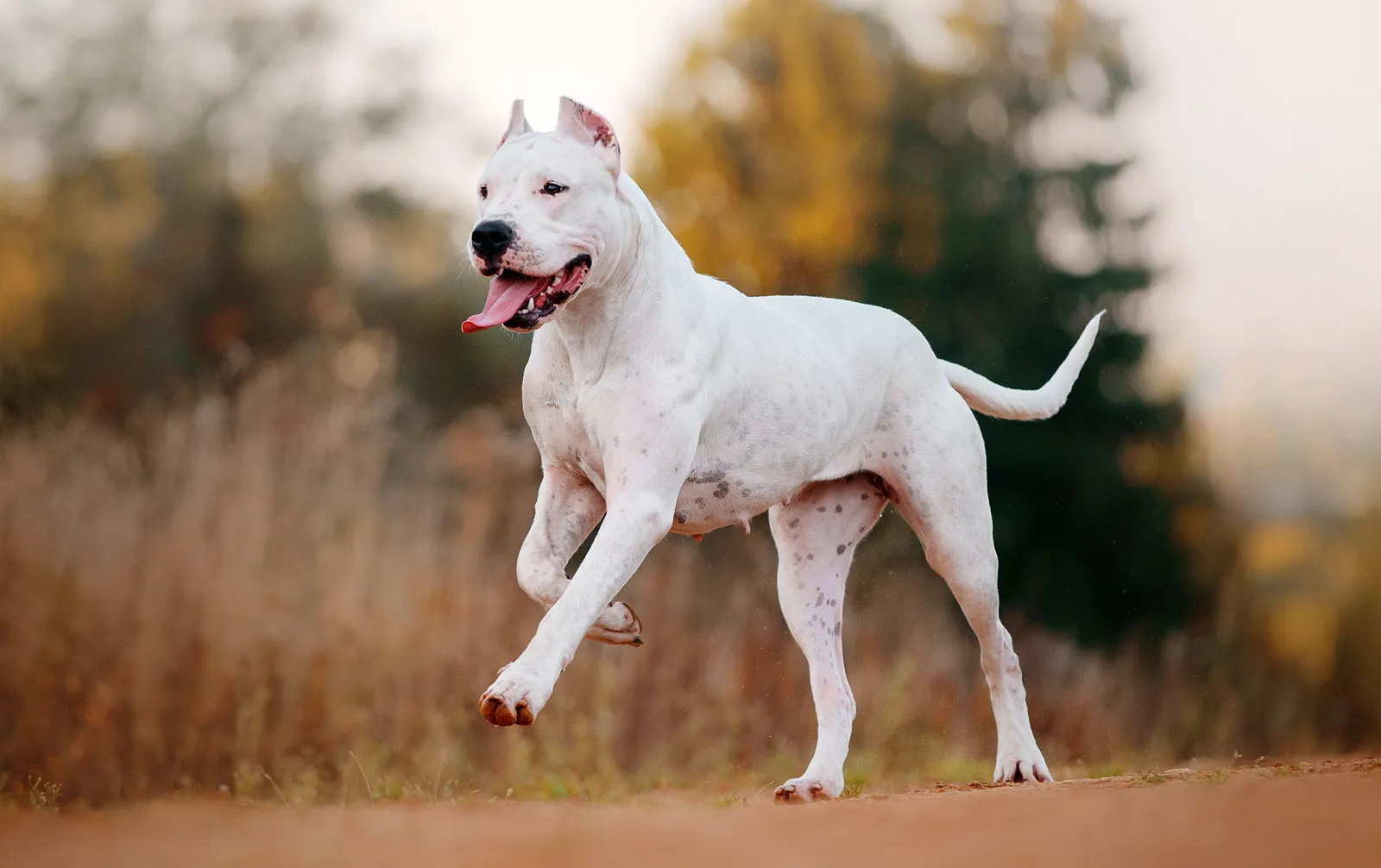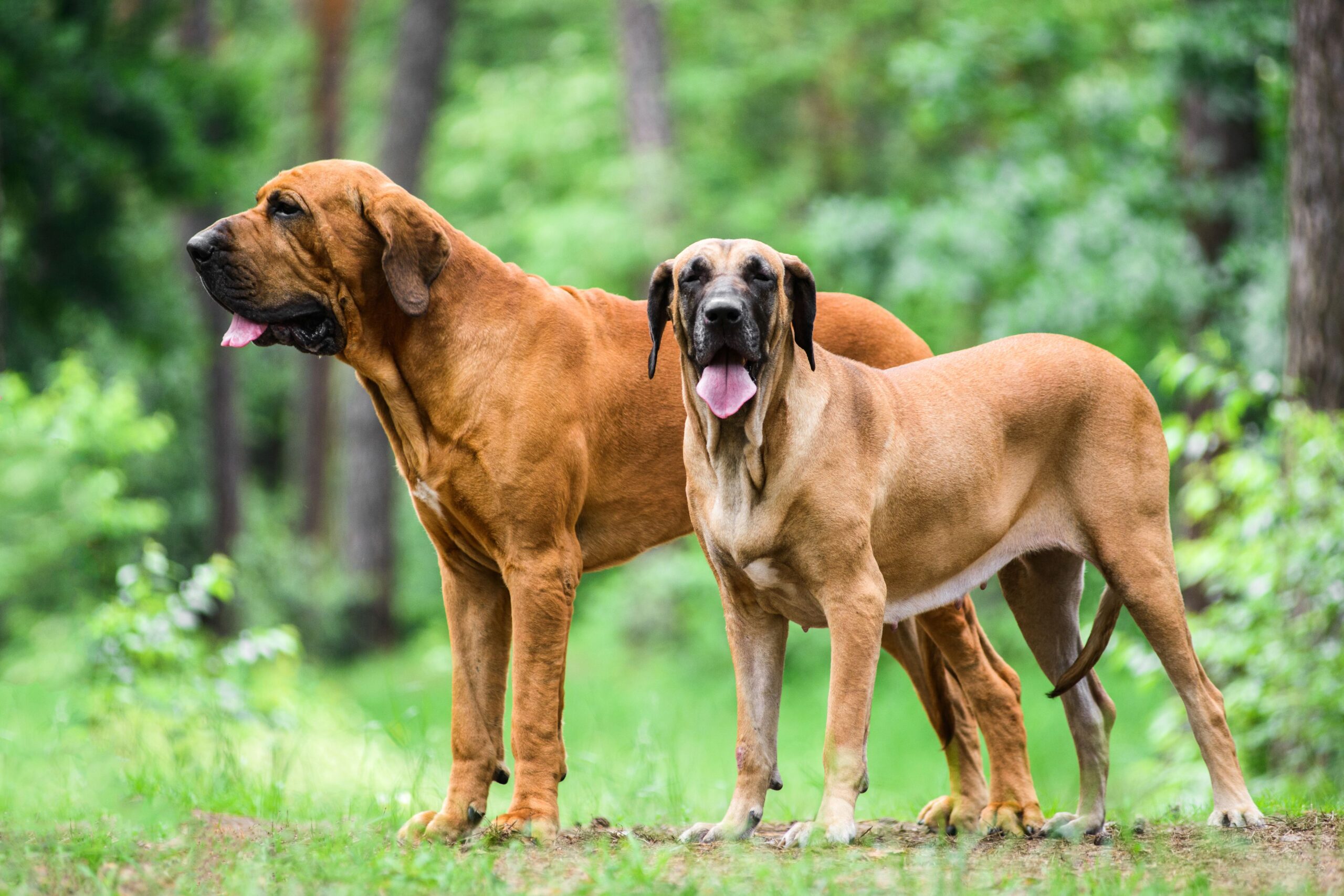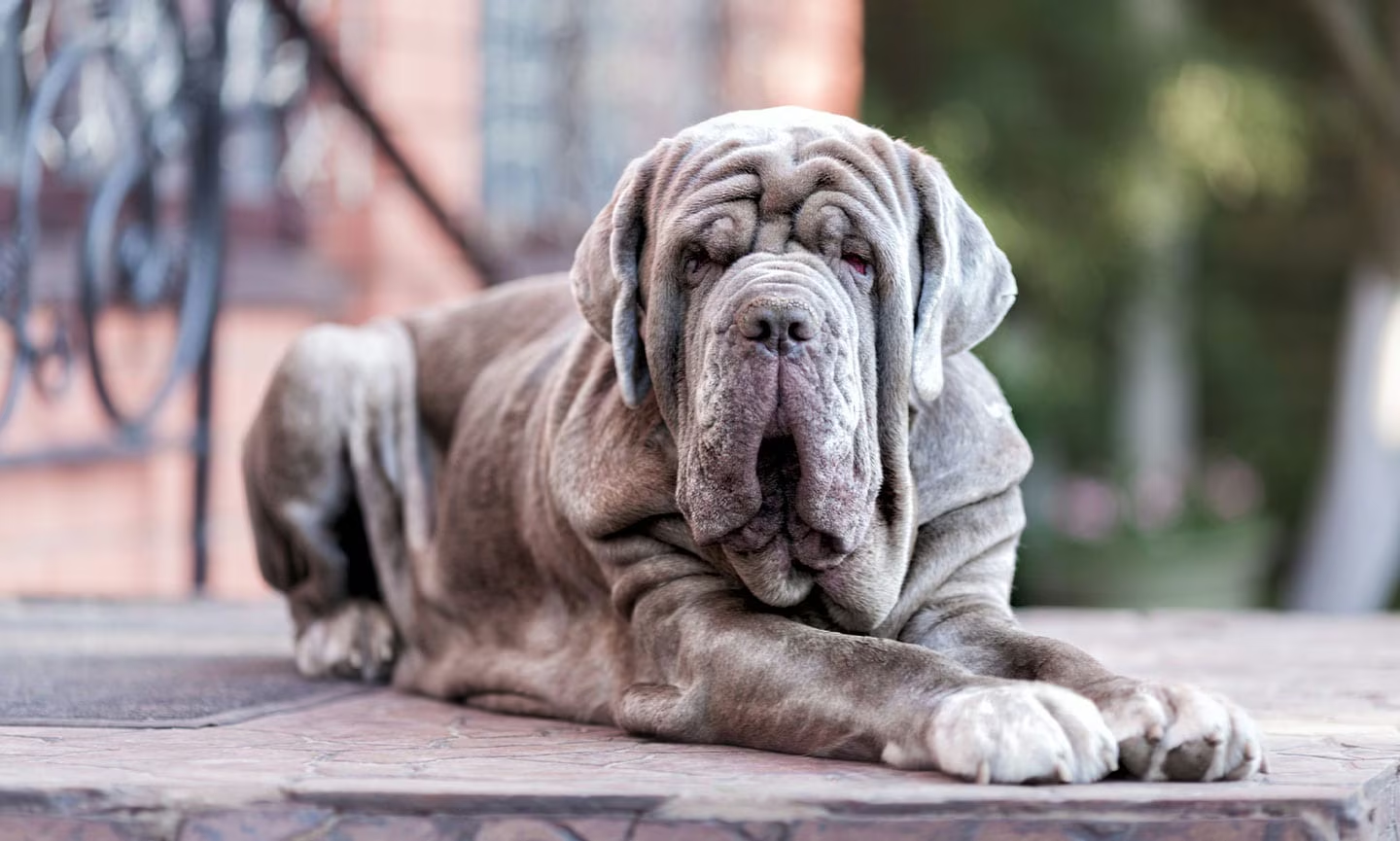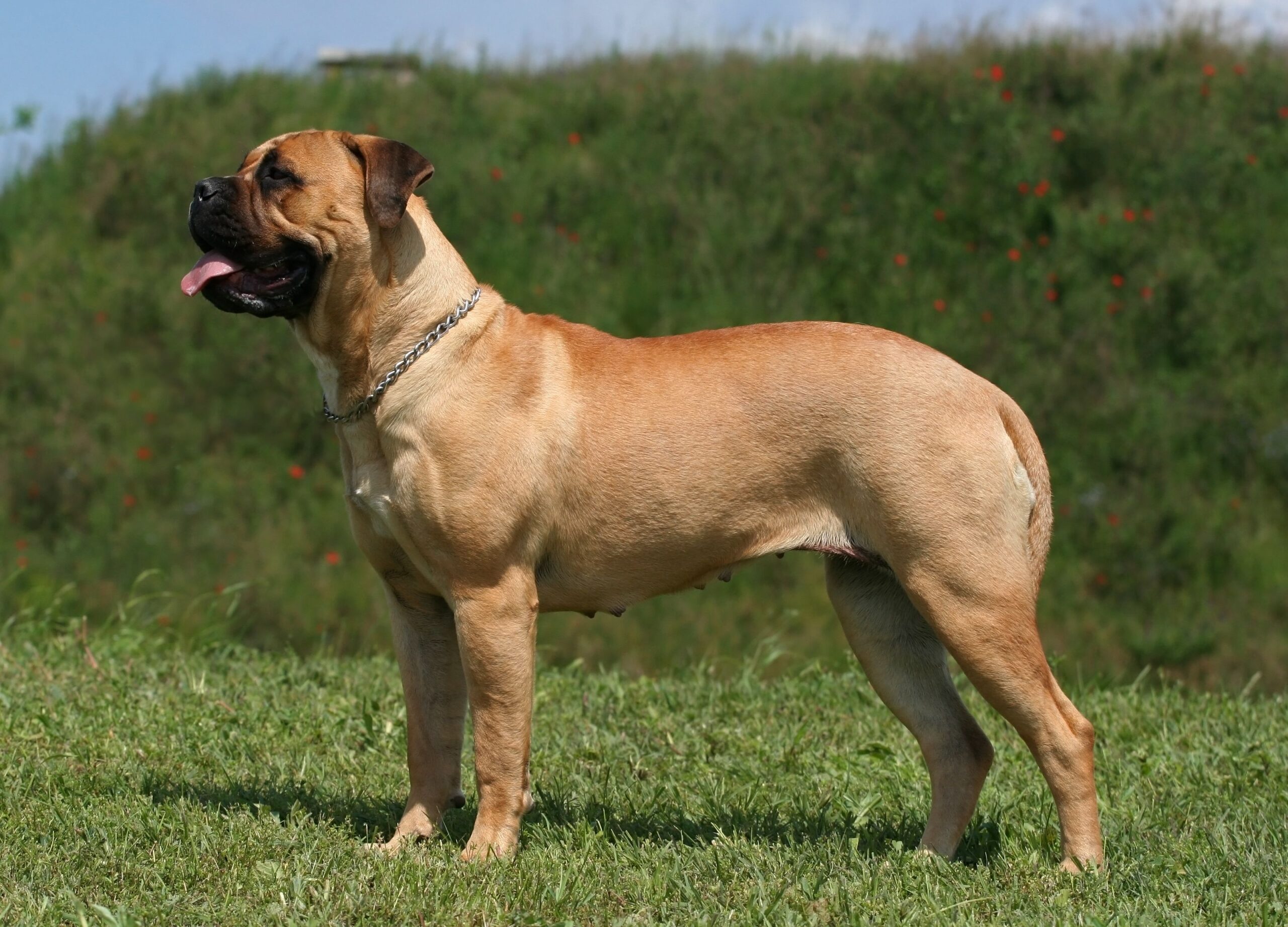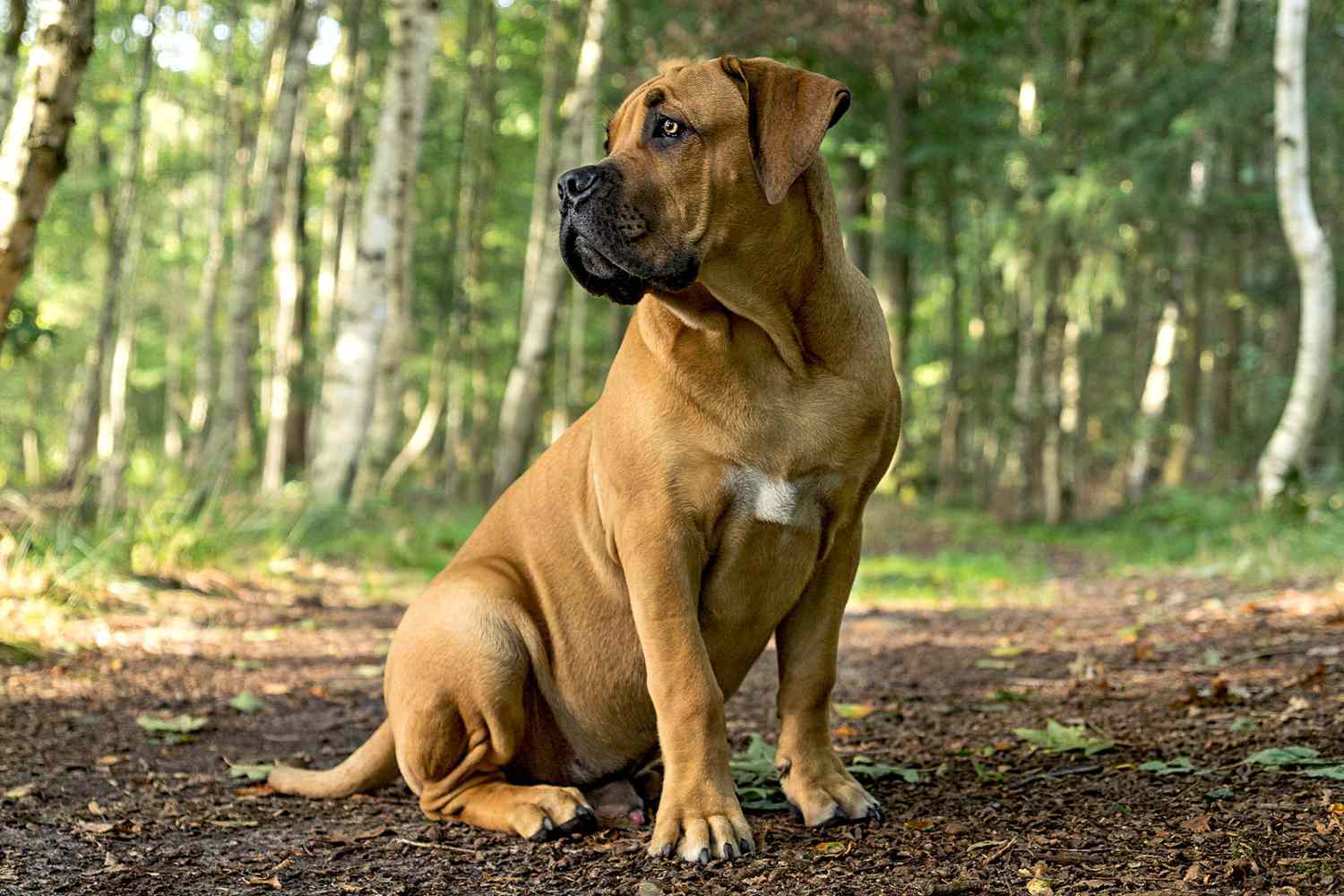THE BACKSTORY
1928. Córdoba, Argentina.
Two brothers stand in the dust of their family estate, analyzing their latest litter of puppies. The older one, Dr. Antonio Nores Martinez, scribbles notes as his brother Agustín points out features in the developing pups. They’re breeding for something specific. Not just any dog, but a perfect hunter. Strong enough to corner wild boar and puma. Smart enough to work in packs. Loyal enough to protect their human companions.
They’re creating what will become Argentina’s national treasure: the Dogo Argentino.
But this isn’t just another dog breed origin story. It’s the blueprint of a revolution in selective breeding. The brothers didn’t want just any hunting dog – they wanted a SUPER hunter with the heart of a family companion.
What happened next changed hunting dogs forever.
RAW POWER MEETS PRECISE ENGINEERING
Let’s cut to the chase.
The Dogo Argentino isn’t a coincidental mix. It’s genetic architecture at its finest.
Starting with the now-extinct Córdoba Fighting Dog, the Martinez brothers implemented a breeding program that would make modern geneticists nod in approval. They systematically introduced DNA from:
- Great Dane (for height)
- Bull Terrier (for that distinctive white coat)
- Boxer (for athleticism and temperament)
- Pointer (for hunting instinct)
- Irish Wolfhound (for size)
- Spanish Mastiff (for power)
- Pyrenean Mastiff (for a calmer disposition)
- Bulldog (for jaw strength)
The result? A muscular, athletic, predominantly white dog that hunts with the precision of a special forces unit and returns home to cuddle with the kids.
That’s not hybridization – that’s VISION.
BUILT DIFFERENT: THE PHYSICAL BLUEPRINT
Picture a dog made entirely of functional muscle. No wasted genetics. No unnecessary bulk.
The Dogo stands 24-27 inches at the shoulder, weighing a solid 80-100 pounds. But this isn’t soft weight – it’s dense, athletic mass distributed across a perfectly balanced frame.
Every physical characteristic serves a purpose:
THE ICONIC WHITE COAT
That signature white coat? It’s not vanity – it’s practical. When hunting in packs through dense Argentine brush, the handlers needed to instantly distinguish their dogs from the wild boar or puma being pursued. The white coat stands out against any landscape, preventing hunting accidents and allowing for quick visual tracking.
Some Dogos sport the classic “pirate patch” – a dark marking around one eye. While technically acceptable in show rings (as long as it doesn’t cover more than 10% of the head), many purists prefer the completely white specimens.
THE POWERFUL HEAD
The Dogo’s head isn’t just strong – it’s architecturally sound. Broad and slightly domed, with a muzzle almost as wide as it is long. The jaws house a perfect scissor bite, designed to grip and hold large game without causing unnecessary damage (remember, these dogs were bred to hold, not kill).
The muscular neck transitions into powerful shoulders without any weak points – a critical feature when restraining animals that outweigh the dog itself.
THE ATHLETIC CHASSIS
Unlike some bulkier mastiff-types, the Dogo Argentino maintains athletic proportions. The chest is deep but not overly wide, allowing for speed and agility. The back remains level during movement, with hindquarters that drive forward with explosive power.
The overall impression isn’t just of strength, but of controlled, directed power. These dogs can sprint, endure, climb, and navigate challenging terrain without tiring.
In every line of the Dogo’s body, form follows function – the ultimate testament to the Martinez brothers’ vision.
THE PSYCHOLOGICAL PROFILE: MORE THAN MUSCLE
Raw strength means nothing without the mind to direct it.
The psychological engineering of the Dogo Argentino is perhaps even more impressive than its physical build. This isn’t a simple muscle-bound guardian. It’s a complex blend of seemingly contradictory traits:
THE HUNTER’S MINDSET
The Dogo hunts differently than most dogs. Rather than killing prey, it was bred to track, corner, and hold – sometimes keeping a wild boar or puma immobilized until hunters arrived. This requires:
- Extraordinary pain tolerance
- Pack coordination
- Situational awareness
- Impulse control (knowing when to strike and when to hold)
A Dogo on the hunt isn’t an uncontrolled force – it’s a calculated operator making dozens of split-second decisions.
THE FAMILY COMPANION
Here’s where things get interesting.
The same dog bred to face down a mountain lion can show remarkable gentleness with family members. Dogos typically form intense bonds with their human pack, displaying:
- Unwavering loyalty
- Protective instincts without unnecessary aggression
- Playfulness and affection within the family unit
- Patience with familiar children
This duality – fierce hunter and gentle companion – is the psychological masterpiece of the breed. Where most working breeds are either too soft for serious work or too hard for family life, the Dogo walks the razor’s edge between both worlds.
THE INTELLIGENCE FACTOR
Don’t mistake the Dogo’s physical prowess for mental simplicity. These dogs possess significant intelligence, particularly in three key areas:
- Tactical thinking (how to approach and manage threats)
- Environmental awareness (tracking, scenting, monitoring territory)
- Social intelligence (understanding pack dynamics with both dogs and humans)
This isn’t necessarily the same intelligence you’d find in a Border Collie solving puzzles, but rather practical, applicable smarts that serve their working purpose.
LIVING WITH THE WHITE SHADOW: THE UNFILTERED TRUTH
Let’s get real for a minute.
The Dogo Argentino isn’t for everyone. In fact, it’s for very few people.
This isn’t a starter dog. It’s not even an intermediate dog. This is a graduate-level canine that requires an owner with experience, confidence, and consistency.
Here’s what actual Dogo ownership looks like:
THE EXERCISE EQUATION
A Dogo without adequate physical outlet is like a sports car stuck in traffic – all that power with nowhere to go.
The minimum viable exercise for an adult Dogo is about 60-90 minutes of intense activity daily. Not casual strolling – we’re talking about:
- Hard running in secure areas
- Structured play that engages both body and mind
- Tracking exercises
- Swimming (many Dogos excel in water)
Urban apartment living is generally unsuitable unless you’ve got serious time to dedicate to proper exercise. These dogs thrive with space to move and work to do.
THE TRAINING IMPERATIVE
Here’s where most potential Dogo owners fail the test.
This breed requires impeccable training from day one – not just basic commands, but ongoing, consistent direction that establishes you as a worthy leader. The training must be:
- Firm without being harsh (they don’t respond well to punishment)
- Consistent (no mixed signals)
- Engaging (boring repetition won’t cut it)
- Ongoing throughout their entire life
Early socialization isn’t optional – it’s mandatory. A properly socialized Dogo can learn to accept strangers and other animals when introduced appropriately, but their protective instincts mean this socialization must be handled with expertise.
THE HEALTH PICTURE
The Dogo Argentino is generally robust, with a lifespan of 9-15 years (impressive for a large breed). However, like any purebred, they have specific health considerations:
- Deafness (particularly in completely white specimens)
- Hip dysplasia (common in many large breeds)
- Skin issues (their short white coat offers minimal UV protection)
Responsible breeding has helped minimize these issues, but prospective owners should work only with breeders who conduct appropriate health testing.
THE LEGAL LANDSCAPE
We can’t ignore reality: the Dogo Argentino faces breed-specific legislation in several countries, including the UK, Australia, and certain jurisdictions in the US.
This isn’t because the breed is inherently dangerous – it’s largely due to misidentification, misunderstanding, and the consequences of irresponsible ownership. However, potential owners must research local laws before considering a Dogo.
THE RIGHT OWNER: ARE YOU QUALIFIED?
By now, you’re either intimidated or intrigued. If it’s the former, that’s your answer – look elsewhere. If it’s the latter, ask yourself these unfiltered questions:
THE EXPERIENCE CHECK
Have you successfully raised and trained large, powerful breeds before? Not just owned them – actually developed them into well-mannered canine citizens? The Dogo isn’t learning material; it’s advanced application of skills you should already possess.
THE LIFESTYLE ANALYSIS
Does your daily routine accommodate a dog that needs significant physical and mental engagement? Do you have:
- Adequate space
- Time for proper exercise
- The ability to include the dog in family activities
- Few strangers regularly entering your property
The Dogo thrives as an integrated family member with clear purpose, not as a backyard ornament or occasional companion.
THE COMMITMENT TEST
Are you prepared for 10+ years with a dog that:
- Requires ongoing training
- May limit your housing options
- Needs careful management around unfamiliar people and animals
- Will be physically capable of overpowering you if poorly trained
This isn’t meant to discourage, but to ensure the right matches between dogs and owners. A well-placed Dogo is a joy; a misplaced one is a recipe for heartbreak.
FINDING YOUR WHITE SHADOW: THE RIGHT WAY
If you’ve made it this far and still feel the Dogo Argentino might be your match, here’s how to proceed responsibly:
THE BREEDER EQUATION
Finding an ethical Dogo breeder is non-negotiable. Look for breeders who:
- Health test all breeding stock (especially for deafness and hip dysplasia)
- Prioritize temperament alongside physical standards
- Raise puppies with appropriate early socialization
- Ask you more questions than you ask them
- Offer lifetime support for their puppies
Expect to pay $1,500-4,000 for a well-bred puppy. If that sounds expensive, wait until you calculate the cost of behavioral rehabilitation for a poorly bred one.
THE RESCUE ROUTE
Alternatively, consider Dogo-specific rescue organizations. Many excellent specimens end up in rescue due to owner circumstances rather than behavioral issues. Benefits include:
- Lower initial cost
- Adult dogs with known temperaments
- The satisfaction of giving a second chance
However, be equally thorough in your evaluation of rescue organizations. The best ones assess their dogs carefully and make thoughtful placement decisions.
THE FINAL VERDICT
The Dogo Argentino represents one of the most successful purposeful breeding programs in modern canine history. From a clear vision in 1928 to international recognition, this breed stands as testament to what careful selection can accomplish.
For the right owner – experienced, active, consistent, and committed – the Dogo offers an unparalleled combination of:
- Athletic capability
- Protective instinct without unnecessary aggression
- Loyalty that borders on devotion
- Working drive with an off-switch for family time
They’re not for the masses, nor should they be. The Dogo Argentino is a specialized instrument, like a fine performance vehicle or precision tool – remarkable in capable hands, potentially problematic in inexperienced ones.
But for those who qualify and commit to meeting the breed’s needs, the reward is a partnership with a dog that embodies the perfect balance of power and control, intensity and gentleness – the white shadow that stands steadfast beside you, ready for whatever comes next.
